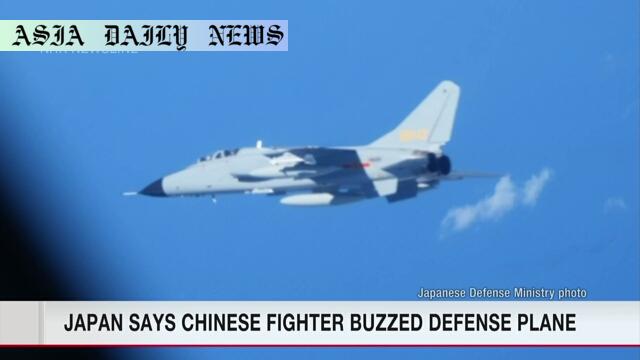Airspace Tensions: Japan expresses serious concerns to China after dangerously close military plane encounters in East China Sea.
A Chinese military plane flew within 30 meters of a Japanese SDF aircraft over the East China Sea on consecutive days.
The situation poses risks of accidental collisions and has prompted Japan to express serious concerns to China.
Similar incidents were reported in June, involving Japanese and Chinese military aircraft near the Pacific Ocean.

Escalating Airspace Encounters Between China and Japan
In recent developments, incidents involving dangerously close encounters between Chinese and Japanese aircraft have become a pressing international concern. A Chinese fighter-bomber reportedly flew within 30 meters of a Japanese Self-Defense Force (SDF) intelligence-gathering aircraft over the East China Sea. This alarming proximity was recorded on two consecutive days, Wednesday and Thursday, evidencing a pattern of repeated airspace conflicts. Despite no physical damage or injuries reported, the risk of accidental collisions in such scenarios remains high. These incidents reflect a tense dynamic in East Asia’s contested airspace, highlighting the geopolitical sensitivities in the region.
Historically, the East China Sea has been an area of dispute, with both Japan and China asserting territorial claims over islands and maritime areas. Such sensitive zones increase the likelihood of military encounters and raise questions about the rules of engagement. On this occasion, Japan’s Defense Ministry expressed significant concerns to Beijing, urging preventative measures to avoid similar incidents in the future. Repeated miscalculated encounters can exacerbate existing regional tensions, stalling diplomatic negotiations.
The Repeated Pattern of Close Approaches
These incidents are not isolated. In June, Japanese aircraft faced similarly close enounters with Chinese fighter jets over the Pacific Ocean. Both incidents highlight the continued militarization of Asia’s airspace and underline strained Japan-China relations. Military responses in contested zones often operate in a high-stakes environment, where a misstep can lead to escalatory actions or unintended consequences.
The Japanese government has responded by documenting such events and making diplomatic overtures to address them. The repeated nature of these encounters, however, demonstrates that a long-term resolution may require broader discussions between stakeholders in regional security. Both Japan and China will need to navigate these difficult waters carefully, with due consideration for the mutual risks involved.
Looking Ahead: The Necessity for Dialogue
Military actions in sensitive territorial zones increase the urgency for diplomatic collaboration. Instead of escalating through response measures, transparent communication protocols are essential to prevent future mishaps. This latest series of incidents should act as a wake-up call to all parties invested in regional stability. Developing or enforcing airspace agreements and ensuring accountability of military actions might be crucial steps in ensuring peace and safety in the East China Sea region.
Commentary
Understanding the Gravity of Close Airspace Encounters
The recent close encounters between Chinese and Japanese aircraft over the East China Sea shed light on the fragility of regional stability in Asia. An event where two military planes pass within 30 meters of each other is not just a breach of standard operating protocol but also a glaring reminder of the risks lurking in geopolitically charged zones. These occurrences evoke genuine concerns about the potential for an accidental escalation that could lead to dire, unintended consequences.
One cannot ignore the pattern of these encounters, especially given their recurrence on multiple occasions, including a similar incident in June this year. It becomes hard not to question whether these acts are mere operational oversights or calculated moves within a larger strategy. Regardless of intent, such high-stakes gambles place military personnel at unnecessary risk and contribute to an atmosphere of mutual antagonism. Diplomacy, undoubtedly, must surface as the foremost tool to mediate such predicaments.
The Broader Implications for Regional Security
These airspace incidents also carry broader implications. For countries in Asia and beyond, they signify a tipping point in how military activity could either strengthen deterrence or spiral towards confrontation. For Japan, this incident may further fuel debates on enhancing its military capabilities or forming stronger defense ties with allies. Meanwhile, for China, these actions could be perceived as asserting dominance in contested zones but at the cost of straining already tenuous relationships.
This is a significant moment to reflect on how pervasive respect for international norms and clearer communication can hold adversarial states accountable. Such close-shave incidents must not become normalized behavior, for they do not merely endanger aircraft and pilots but threaten the very fabric of peace in the region.


